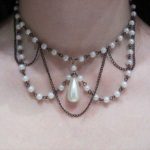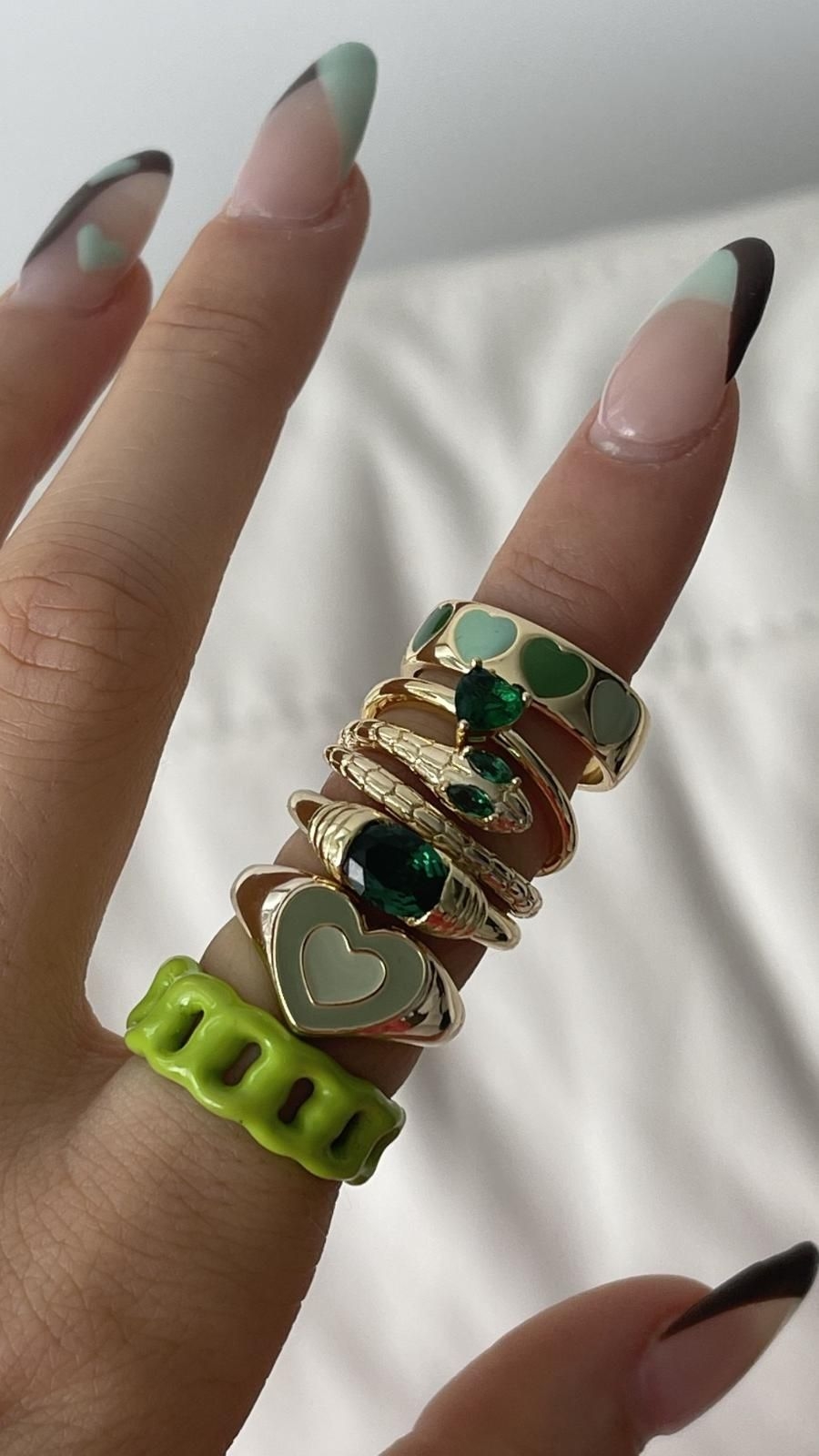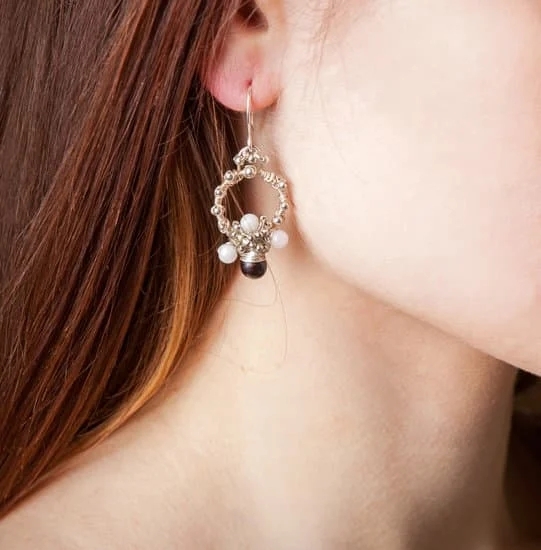Testing jewelry bead material is an essential step in ensuring the safety of jewelry beads. The safety of such products should be a priority for everyone involved with the making of jewelry, from designers to wholesalers to retailers. A thorough understanding of selecting and testing materials used will ensure that all components are safe for the consumer. This article explains how to assess jewelry bead material prior to use in order to create safe and high quality pieces.
Safety Testing Guidelines for Jewelry Bead Material All jewelry bead components must meet established consumer product safety standards before being used. This includes avoiding unnaturally dyed materials, as some dyes may contain lead or other hazardous substances that can be absorbed into the body when worn against skin.
Any metal parts should also be tested for potential release of nickel at a third-party laboratory certified by major testing organizations such as Global Safety Textiles (GST). In addition, shell products should check if they have been sourced responsibly and meet industry regulations on protection of endangered species.
Third Party Vendor Option For Testing Jewelry Bead Material In addition to testing internally, there are a range of third party vendors available for testing services on a variety of different materials including crystal beads, glass beads, plastic beads, wood beads and fabrics. These companies specialize in providing accurate test results based on customer specifications and requirements.
Through their online submission process, customers can submit samples for professional testing reports within 72 hours depending on the volume size submitted. Quality control inspections done by third parties can prevent any future fines due to non-compliance with laws or regulations related to product safety.
What Materials Are Used in Making Beads and Their Quality
Beads are often used in jewelry making and other craft projects. The quality and durability of beads is important for a successful outcome. Many types of materials can be used to make beads. It is important to consider all the options available before you purchase materials for your project.
Glass beads are some of the most common materials used in making beads. They come in a variety of shapes, sizes, and colors and can be decorated with intricate designs. Glass beads are durable and resistant to fading or wear, but they can also break easily unless proper care is taken with them.
Porcelain beads are similar to glass beads, but they have an opaque finish that gives them a classic look. These beads are sometimes fired to give them an even more sophisticated appearance, but porcelain can chip or crack if dropped or mishandled during crafting.
Ceramic beads also provide a classic design for your jewelry-making projects. These bead styles range from solid colors to complex patterns and they add a swanky touch to any creation. Ceramic beads are less likely than porcelain or glass to break when crafting with them, but they still should be handled with care while working on projects.
Metal materials such as sterling silver or copper often feature charmingly decorative designs on them which can liven up any craft project. Sterling silver jewelry pieces tend to be more expensive than metal pieces made from other types of material like copper; however they both offer good quality if their construction is completed correctly and cared for properly after manufacturing.
Plastic is by far the least expensive material available when it comes bead-making materials. Plastic balls come in different sizes, textures, colors, and shapes; many sparkles options allow you create brilliant looks without spending too much money for each piece crafted with plastic elements.
Types of Tests for Assessing Bead Quality
The quality of jewelry beads needs to be assessed before being used in crafts or other applications. When making purchasing decisions about beads, it is important to understand the types of tests that you can use to measure their quality. There are several standard tests for assessing the quality of beads including durability and piercability tests. Additionally, there are many physical property tests that can be conducted on different bead materials like glass, plastic, and metal.
Durability Tests
Durability tests assess a bead’s resilience to wear such as scratches, abrasions, and impacts. These test involve scratching or rubbing the bead with a specific material and then inspecting the result for evidence of damage.
For example, plastic beads may have strong scrapes when tested with medium-hard objects like diamonds or emery paper while metal beads would require harder materials such as steel wool. On the other hand, soft materials like rubber and foam may show minor scuffing after being tested with just a light brush from one’s finger nail.
Piercability Tests
Piercability tests are designed to measure how well a bead will withstand punctures from needles or pins used when stringing them onto a necklace or bracelet. Generally speaking, softer materials like rubber tend to do well in these types of tests while harder materials like stone or glass fare worse due to their brittle nature.
Different thicknesses and sizes of needle heads should be tested depending on how much strain you plan on putting on your creation once it is worn by its owner.
Physical Property Tests
Lastly, physical testing is often used in combination with piercability and durability testing for measure characteristics such as moisture absorption rate and heftiness (weight). This type of testing looks at various elements such as size consistency between multiple pieces and the ability to withstand extreme temperatures without breaking down quickly over time.
It also considers factors like flexibility when assessing beading materials such as plastic which may need more stretch than metallic options if they are going to hold up under repeated wearings over time.
Tests for Verifying Jewelry Materials Authenticity
Before selling jewelry, the material should be tested for authenticity. Here is a list of some tests to verify what type of material the jewelry is made of:
- Magnetic Test – Jewelry made out of metal can be tested by using a magnet. This test will quickly identify if the jewelry is made out of ferromagnetic or non-magnetic materials like gold, silver or platinum.
- Acid Test – An acid test is used to check the purity levels of gold and silver jewelry. The acid etches away at the surface of the metal and if it is real, it will discolor certain areas depending on its purity.
- Sulfur Fumarole Test – This scientific test exposes the jewelry to highly heated sulfur fumarole that vaporizes impurities such as copper and lead. It elaborates different colors on pure metals.
This type of testing can also be valuable in appraising a piece or determining its current market value. Testing a wide array of jewelry components is an important part of verifying that customers are purchasing high-quality merchandise. Knowing what kind of material is in use also prevents any potential legal issues from arising in cases involving counterfeited pieces.
The XRF technique (X-Ray Fluorescence) works well to identify base metals such as silver, gold and copper which all have unique electromagnetic properties that allow them to be identified almost immediately under testing. Making use of machines designed specifically for this purpose increases accuracy despite their relatively expensive cost since they offer unparalleled freedom when measuring multiple pieces at once.
While traditional techniques such as magnetic testing still remain popular today, thermoluminescence testing has been proved time and again to provide much more accurate results especially when dealing with gemstones like diamonds and sapphires. By measuring radiation decay over time with special tools, legitimate goods are distinguished from those with false properties. Ultrasonic cleaning remains one way to thoroughly yet carefully clean dirt build-up from jewels while preserving their luster simultaneously.
Pros and Cons of Quality Beads
- Quality beads last longer and are more resistant to everyday wear and tear.
- Quality materials provide a variety of interesting shapes in attractive colors that keep projects from looking too “cookie-cutter”.
- Quality beads hold up to multiple uses which makes them suitable not just for jewelry, but beading crafts like wall hangings and even home accessories.
- Quality materials tend to be pricier than their counterparts.
- Finding the right variety or combination of materials can be difficult if you’re not an experienced bead crafter.
- Not all high-quality beads can withstand extreme temperatures or travel well in humid climates, making them less appropriate for certain types of projects.
Durability is one major factor when it comes to choosing quality beads. Some materials have been known to chip away over time due to things like colors fading, rough handling, etc. Hearty wooden beads and ones made from metals such as stainless steel are oddly durable, while natural stones may be more brittle by nature.
Molded plastic or glass is often a good mid-range option; though they are subject to scratches or flaking off paint coatings, they usually last much longer than those of lower quality. It’s important for users to select the material that best suits their project’s needs – visuals aside – in order to get the best performance out of their beads.
Aesthetics must also come into account when selecting bead materials; attractiveness plays a key role in intriguing potential customers. Jewelry makers should carefully select colors, textures, shapes and sizes that will complement any fashion palette with which they wish to create items with their beads.
Trying out different combinations of supplies can help users find new inspiration for unique designs that will stand out from the crowd and draw buyers in without sacrificing comfort or style as well as originality. For this purpose, websites offering tutorials as well as suppliers offering bulk discounts on unique pieces may prove helpful to crafters who want reliable yet unusual elements that allows them stand out from the competition.
Issues With Low Quality Beads
When it comes to buying jewelry beads, quality is an important factor for the craftsperson. Low quality beads can lead to a great deal of issues with the finished product. Inferior materials such as plastic or wood can break apart or chip easily when strung on a necklace or bracelet. The colors may also fade over time leading to an unattractive appearance and in some cases, skin irritation due to exposure to dyes and chemicals used in inferior grade beads.
How Quality is Determinined
In order to determine if the material used in jewelry beads is of good quality, testing will usually be done by the manufacturer. This could involve examining the properties of various materials including strength, surface phenomenon and formability – how easy is it for pieces of the material to form different shapes? The weight and flexibility of certain materials can also be tested. These tests are important in order ensure a high quality product that meets industry standards.
Color Quality and Fastness
The colorful appearance of jewelry beads are one their most attractive features so quality control tests need also include color analysis. This involves measurements such as color space accuracy, chromaticity values, colorfastness and luminance values which measure brightness and contrast levels between colors and shades.
The results need to adhere to technical specifications laid out by industry standards for safe use on items worn directly on human skin and should not contain any toxic substances that may harmfully interact with users’ skin or that may cause other health concerns related long-term usage.
Cleaning and Care Tips for Properly Maintaining Beads
When working with jewelry beads, it is important to take the appropriate cleaning and care steps to ensure that they last. To start, remove any dirt or dust from bead surfaces using a soft brush.
The bristles of the brush should be made from natural bristles such as boar or horsehair, unless the beads are made from a very delicate material in which case, a feather duster may be more appropriate. Never use harsh chemicals which could damage the surface of the bead.
Next, if the beads have been exposed to moisture (e.g., sweat), it is recommended that they be wiped gently and then dried with a soft cloth before being stored away in an airtight container to prevent further moisture damage. Always avoid submerging jewelry beads in liquids as it could also induce corrosion or other forms of damage.
Storage
Once cleaned and cared for properly, careful storage is required for optimal bead life and appearance. First off, choose an airtight container that will protect against dust and debris infiltrating into the box or jar holding your beads while you are not actively using them for projects or during storage periods when you are not crafting with them.
Airtight containers can help combat gradual erosion due to oxidation when left out in open air – especially when those beads are made from gold or silver alloys.
It is also recommended that each type of bead be stored separately in different boxes, labelled accordingly so there will never be any confusion on what types of beads these might be down the line when selecting materials for crafting purposes. Store precious stones separately due to their higher level of fragility compared to glass, plastic or metal beads – this can further help curb against potential scratching which can leave unattractive marks on expensive gemstone surfaces over time.
Organizing
Ultimately proper organization within an individual’s storage space helps with efficient treading counter by way of keeping trays filled with different types/colours of beads organized for quicker accessibility when needed due mainly helpful throughout working hours spent crafting pieces together from said supplies on hand at any given moment’s notice.
Keeping an eye on new additions is always next to key – staying up-to-date on stock levels including colors/compositions (i.e., adding more colours variants than originally presented) aid in ensuring plenty variety available at all times no matter what design aspirations desired end product alike.
Tips for Selecting Quality Beads While Shopping
Testing jewelry bead material is important for both experienced and novice jewelry makers. It can help ensure that the beads you select are of good quality, safe to use, and a pleasant addition to any piece of jewelry. Here are some tips for testing the materials used in your jewelry-making projects:
Physical Appearance
The most basic way to assess beads is through their physical appearance. Look at the construction of each bead carefully. Are the edges or curves smooth and even? Is the surface free from blemishes? All these questions can help you determine how durable and aesthetically pleasing each bead might be.
Weight
Weight can also provide an estimate of a bead’s quality. Heavier beads are usually higher quality than lightweight ones because they contain more material. To properly test this feature, it helps to compare similar pieces from different vendors to get a true sense of what qualifies as heavy enough for the project you’re working on.
Color Intensity
Another aspect to consider when selecting beads is color intensity. When colors appear too light or washed out on one vendor’s product, it usually means they added less dye than necessary during production. If color accuracy is essential for your project then switch vendors instead until you find a clearer version of that item with truer colors.
- Physical Appearance: Smooth edges/curves, no blemishes
- Weight: Heavier beads indicate higher quality
- Color Intensity: Choose bright colors over dull or washed-out hues.
Conclusion
Testing jewelry bead material is an important step in the process of making jewelry. Testing allows crafters to be sure that the materials they are going to use will hold up for their desired end product and not cause any harm or damage.
It also ensures that the beads used will have a long lasting shine, particularly when exposed to certain elements. Through this testing, jewelers can be reassured that their beads will be safe and secure and that the quality of their pieces remains intact for years to come.
The most important factor in testing jewelry bead material is durability. If a bead has weak construction or an easily broken closure, then it puts a great strain on the entire piece. Additionally, the wear and tear a bead may encounter during its lifetime can rapidly reduce its strength if it is not sufficiently tested first.
Durability testing involves checking each component before assembly, as well as exposing them to various conditions such as heat, light, tension, etc., in order to observe how they react under them. This ensures that any weak components are quickly identified before they can potentially cause harm during use or affect the longevity of the final product.
Finally, materials used for making jewelry pieces should also undergo chemical compatibility testing. With this type of testing, different solutions are used with each material in order to determine what kind of effect it has on them individually.
Chemical irritants may degrade some materials over time while others may prove themselves resistant against them; however, without having tested these elements prior to assembly, there would be little way of knowing this ahead of time. The knowledge gained through chemical testing gives qualified jewelers an advantage in determining which materials best suit their application needs while still providing safety and top-notch quality assurance for customers using them at both home and abroad.

Welcome to my jewelry blog! My name is Sarah and I am the owner of this blog.
I love making jewelry and sharing my creations with others.
So whether you’re someone who loves wearing jewelry yourself or simply enjoys learning about it, be sure to check out my blog for insightful posts on everything related to this exciting topic!





